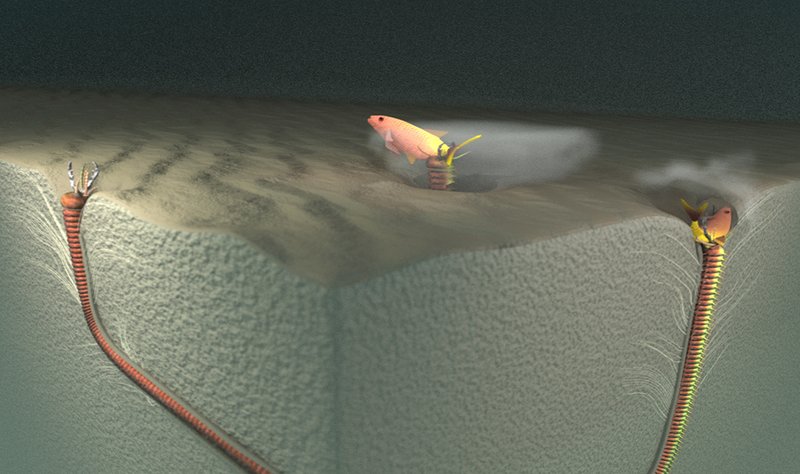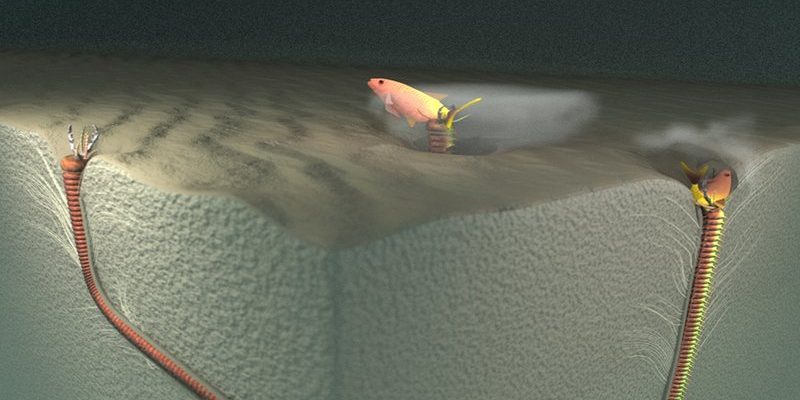
Bobbit worms, often known for their striking colors and length, are a favorite among marine enthusiasts. However, these worms can sometimes hide away in the sand or substrate of your aquarium, making them hard to spot. It can be a bit like trying to find your favorite mug in a messy kitchen—frustrating, isn’t it? But don’t worry! With some thoughtful techniques and a bit of patience, you can uncover your hidden bobbit worm and keep your aquatic environment thriving.
Understanding Bobbit Worm Behavior
Before you can successfully catch your burrowed bobbit worm, it’s important to understand its behavior. These worms are not just chilling in their sandy homes; they’re clever hunters. Bobbit worms wait stealthily for fish or other prey to swim by, making it essential to create a habitat that allows for their natural instincts while still ensuring they come out for feeding.
Bobbit worms are nocturnal, meaning they’re more active at night. You might find them poking their heads out during the evening hours, making this a prime time for observation. If you’re not seeing much action during the day, it’s possible your bobbit worm is simply snoozing beneath the sand. This is totally normal behavior, so don’t fret if they aren’t visible right away.
Another thing to consider is their method of burrowing. Bobbit worms use their strong bodies to dig deep into substrate, creating intricate tunnels. This makes them incredibly hard to retrieve when they decide to hide. An understanding of their natural behavior can aid in your strategy to coax them out.
Choosing the Right Tools
You might be wondering what tools you’ll need to dig out a bobbit worm. Honestly, it doesn’t have to be complicated! Here’s a quick list of suggested tools you might want to gather before you start the process:
- Long tweezers: Great for safely grabbing the worm without harming it.
- Small shovel or scoop: Helpful for gently moving substrate.
- Net: A fish net can come in handy for catching if the worm decides to dart away.
- Flashlight: Perfect for nighttime observations when the worms are more active.
Each of these tools can help you ensure that you’re not just digging aimlessly, but rather, you’re equipped for the job. Just remember to be gentle—you’re dealing with a living creature that deserves your care.
Creating a Gentle Digging Technique
Now that you’ve got your tools ready, let’s chat about how to use them effectively. The key is to approach the digging process with a gentle touch. You don’t want to disturb their environment too much or cause stress.
Start by locating the area where you believe the bobbit worm is burrowed. This could be indicated by slight mounds of substrate or even by the worm’s occasional peek above the sand. Use your small shovel or scoop to carefully move aside a little of the substrate. Make sure to work slowly and cautiously to avoid harming the worm.
Once you’ve removed some sand, use your long tweezers to probe gently. If you feel resistance, it could be the worm! Slowly wiggle the tweezers to coax it out. If they don’t budge right away, don’t force it. Just give it some time. Sometimes worms are a bit shy and need a little encouragement before they feel safe enough to come out.
Using Attractants Effectively
Attractants can be a game-changer when trying to lure out burrowed bobbit worms. Honestly, it’s like setting a little dinner party for them. You want to offer something they can’t resist!
You can use a piece of seafood, like shrimp or fish, as bait. Place it on the sand near the burrowed area and wait. The scent will travel through the water and may entice the bobbit worm to come out. Just ensure that the seafood is appropriate for your aquarium environment, as you don’t want to upset the balance of everything else living in there.
Another option is to introduce some brine shrimp or fish food flakes into the tank. Once again, this creates a feeding opportunity that encourages the worm to make an appearance. It’s all about making them feel comfortable and drawn out of their cozy home.
Monitoring and Patience
One of the most important aspects of digging out burrowed bobbit worms is *patience*. This can often be the hardest part! After all your digging, tweaking, and baiting, it might take some time for the worm to feel adventurous enough to emerge.
While you’re monitoring your tank, maintain optimal water conditions. Ensure the temperature, salinity, and pH levels are stable. If these conditions are off, bobbit worms might hesitate to leave their burrows. It’s like being in a room that’s too hot or cold—you’re not going to want to step outside!
Use your flashlight for nighttime observation. You might just spot the bobbit worm being active as darkness falls. This can also be a great time to see if your bait has done its job. With a watchful eye, you’ll start noticing little signs of movement or activity.
Alternatives to Digging
Sometimes, despite all your efforts, you might not be able to coax out a burrowed bobbit worm. But that doesn’t mean you have to give up. There are a few alternatives you can consider.
One option is to let the worm stay burrowed while monitoring its behavior over time. Bobbit worms contribute to the health of your aquarium by aerating the substrate and consuming detritus. As long as it’s not causing problems, it can actually be beneficial to keep them where they are.
Another alternative is to engage in additional feeding techniques that can encourage the bobbit worm to surface. Try broadcasting pellets or sinking food around the tank to entice them without digging. It’s a less intrusive way of encouraging the worm to come out for a meal.
Lastly, you might think about redesigning your aquarium setup. A more open substrate can help reduce the need for burrowing and allow for easier interactions with your bobbit worm.
Wrapping It Up
Successfully digging out burrowed bobbit worms requires a mix of patience, gentle techniques, and perhaps a little creativity. By understanding their behavior, choosing the right tools, and using attractants effectively, you can coax these fascinating creatures out of their sandy homes.
Remember, each bobbit worm has its unique personality and comfort level. As you experiment with different strategies, keep in mind that their well-being is the most important factor. After all, a happy worm often translates to a healthier aquatic environment for everyone involved.
So, take your time, enjoy the process, and you might just find that digging out a burrowed bobbit worm is as rewarding as it is thrilling!

